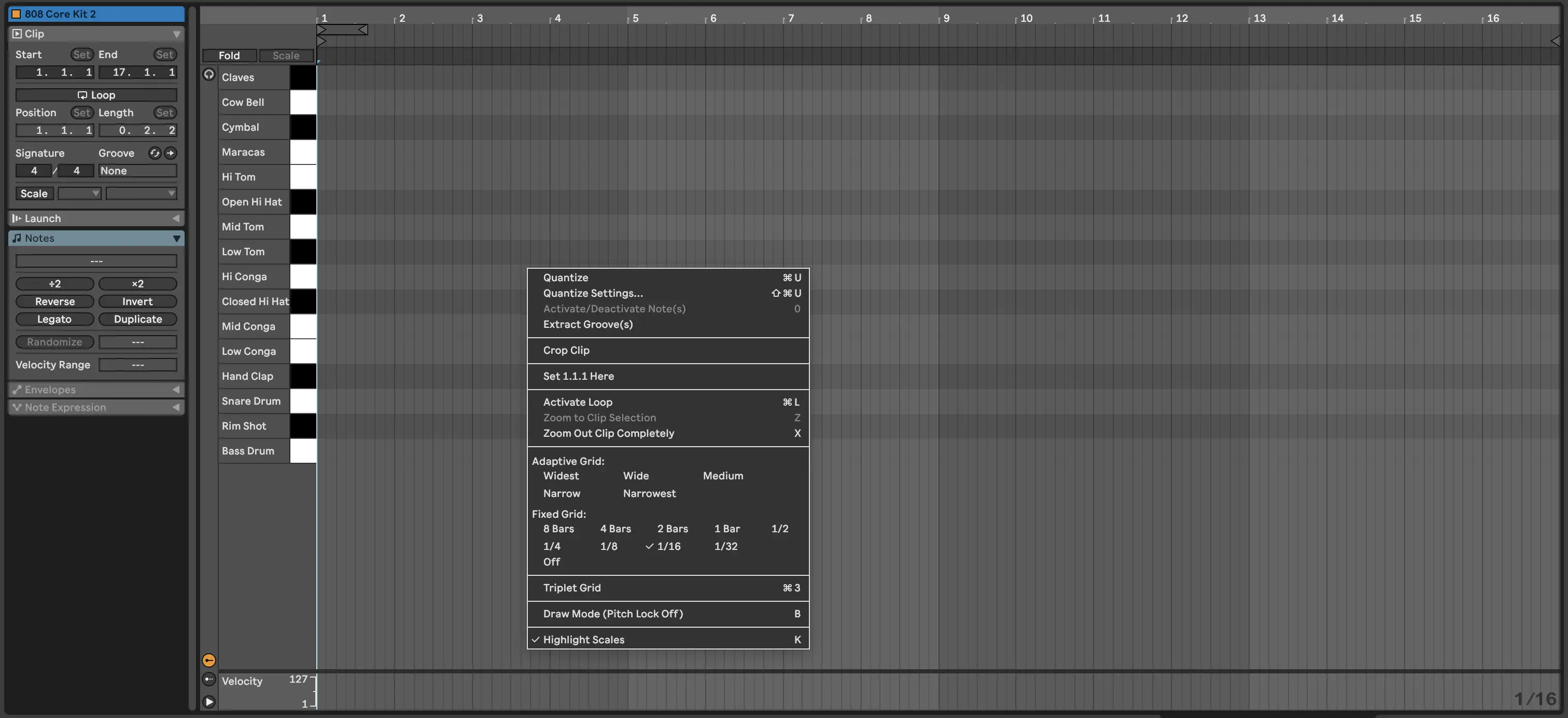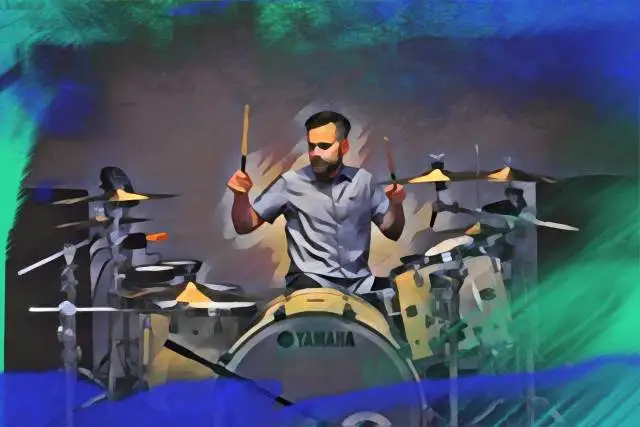Hi-hats have become one of the defining features of trap music.
Like 808s, they’ve almost become a producer’s signature. From rapid 32nd-note rolls or stuttering patterns panned from left to right and pitched into oblivion, the way you program your hi-hats can set you apart from everyone else. Think about Metro Boomin’s tight, precise hats versus Southside’s more aggressive patterns. You can practically tell who’s behind a track just by the hi-hats alone.
Different subgenres of trap take this a step further. In darker, more atmospheric tracks, you might hear slower, spaced-out hats, while in more aggressive, high-energy beats, the hats are super fast and complex. Drill beats, for instance, often feature scattered and unpredictable hats, while trap soul offers a more laid-back vibe.
Despite all this, there are certain things that just work with trap hat patterns, whether it's the use of triplets or those signature rapid-fire rolls. In this guide, we’ll take a look at five of the best hi-hat patterns or techniques that every producer should have in their toolkit.
1. The Simple Sixteenth
One of the easiest ways to get started with trap hi-hat patterns is by using the piano roll in just about any DAW. I’ll be walking through this in Ableton, but most DAWs work similarly. First, you’ll want to set your time division. In Ableton, you can do this by right-clicking in the piano roll window and using the contextual menu that pops up to change the grid to 1/16 notes.

Once you’ve got that set, go ahead and fill in a simple 1/16 note repeat for the hi-hat. It’s a super basic pattern but a good starting point. To give it a more natural feel, I like to adjust the velocity on some of the hi-hat hits. You don’t want them all at the same level. Varying the velocity slightly helps humanize the pattern, so it doesn’t sound too robotic.

While this is definitely an okay place to start (and would have killed it back when the Atlanta trap scene blew up in the early 2000s), producers and listeners now expect a bit more creativity. That’s where the next pattern comes in.
2. Triplets
Triplets add an extra note to the mix, shifting the groove from twos to threes, which instantly changes the vibe. They give a unique feel that’s not quite straight, but not totally out there either.
In music theory terms, a triplet is when you divide a beat into three equal parts, fitting three notes where you’d normally have two.
Back in the 90s and early 2000s, hip-hop was big on that one-two duplet feel, which made sense because of the samples producers were working with. A lot of tracks leaned on the steady, straightforward grooves that came from old funk, jazz, or soul records.
But in today’s trap music, producers love flipping that old rhythm by using triplets.
Here’s what a triplet pattern looks like in the piano roll:

Notice how we’re still working with the sixteenth note grid, but I’ve thrown in the kick and snare so you can see how it all fits together with the beat.
When you count triplets, the feel is a bit different. It's “trip-ple-let, trip-ple-let” with each "trip-ple-let" occupying the space of a single quarter note, rather than just “1-and-2-and.”
Triplets push the beat in a way that feels tighter and busier without being overwhelming. Those groups of three notes are what give triplets their signature rhythm.
3. Rolling Hi-Hats
Now that we’ve got a solid sixteenth note pattern with some triplet variation, it’s time to add a bit of flavor. One of the coolest aspects of trap rhythm is the rolling hi-hat. It’s become a signature sound in subgenres like drill, footwork, and even some experimental trap.
You know these rapid, machine gun-like hi-hat rolls when you hear them.
While rolling hats might seem randomly placed, most producers use them strategically to accentuate specific parts of the groove. When you hear it, it makes sense.
For example, you might hear a quick roll leading into a snare hit, or at the end of a phrase to create tension and then release it. In this case, I’m going to drop a roll at the end of this four-bar groove to pull everything back around to the 1.
Here’s what it looks like in the piano roll:

Notice how the roll helps transition smoothly into the next section. To keep it from sounding too robotic, you can add a small crescendo, gradually increasing the volume as the roll builds. This not only makes the hi-hat feel more natural, but it also drives the beat forward, pulling you right back into the start of the loop with some extra momentum.
4. Swing
Now that we’ve locked in some solid sixteenth notes, sprinkled in some tasty triplets, and thrown in a nice little roll at the end of the groove, we’ve got a solid foundation. But if you want to add a bit more human flavor or switch up the vibe, swing is the perfect tool.
Swing, in the context of these sixteenth note hats, shifts the timing of the notes to create a laid-back, slightly off-the-grid feel. Instead of every hit landing perfectly on the grid, some hits get pushed slightly forward or backward. This gives the beat a more relaxed groove and keeps it from feeling too stiff.
When you apply swing to your hi-hats, it can give them a little swagger. A lot of trap beats with a slower, moodier vibe use this technique to give the hats a more human touch.
Here’s what it looks like in the piano roll:

You’ll notice that not all the sixteenth notes in the third bar line up perfectly anymore. By adding swing, we’re tweaking the timing just enough to change the feel without losing the overall flow of the pattern.
5. Pitched Hats
With all the sixteenth notes, triplets, rolls, and swing we’ve covered, you’ve already got a solid hi-hat pattern arsenal.
But if you really want to take your hi-hat game to the next level, like many top producers, I recommend experimenting with pitch shifting. You’ll hear this technique in tracks like Travis Scott’s "Goosebumps" and Future’s "Mask Off."
There are a few different ways you can go about pitching your hats. One option is to use pitch automation, which lets you adjust the pitch of a single hi-hat hit as it plays.
Another way is to drop a hi-hat sample into something like Ableton’s Simpler, then write in different pitches directly on the piano roll as if you were playing a melody.
I'm a big fan of using automation to shift the pitch of my hats throughout the groove. This gives the pattern a more dynamic, evolving feel.
Pitched hi-hats are great in breakdowns, transitions, or just to keep things interesting in the middle of a repetitive drum loop. I especially love it during hi-hat rolls or at the very end of a loop.
By varying the pitch, you can add a lot more personality to your hats without having to switch up the rhythm.
Hats Off to Trap Music
At this point, you should have some basic hi-hat concepts to use in your next trap beat.
All of the trap hi-hat techniques we discussed are used by the biggest producers in the game, and they're great for making a track bounce. Of course, ultimately, you'll want to take these trap hi-hat concepts and run with them in a different direction to create something that's uniquely you.
You can do so by creating your own trap hat samples or using effects like panning, phasing, reverb, and delay.
Have fun and check out what other big producers are doing. I often find that by trying to mimic other music creators, you can learn quite a bit about the craft.





